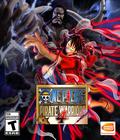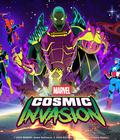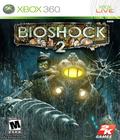Big Daddy is back.
When the original BioShock debuted on the Xbox 360 in 2007, it stood out as a game that emphasized story and atmosphere just as much as it did the traditional FPS mechanic of filling your opponent with lead. The much-anticipated BioShock 2 provides a new narrative and polishes up some of the rough edges seen in the first, but at the same time, it fails to really push the envelope in any part of its design. It is still a tasty dessert; it's just not a new dessert.
Set a decade after the events in the original game, BioShock 2 drops players into the role of the eponymous Big Daddy. You're not just any Big Daddy, though: You're one of the original Big Daddies, prototype model Delta. As a result, you're not quite as big and buff as the other Big Daddies in the game, but you also have the advantage of plasmids and tonics. Think of yourself as something of a hybrid. You can even dual-wield: plasmid in one hand, gun in the other.
The dual-wield mechanic helps increase the pace of combat compared to the first game, but it is otherwise quite similar in form and function. When in battle, the Splicers will attack mercilessly, with little care for their personal safety. Sure, they'll retreat from time to time, but charging is more their style. Imagine a city packed full of supernatural freaks that are eternally pissed off, and you've got a good sense of what it's like.
Going solo against a Splicer, the odds are usually stacked in your favor. The minions of Rapture don't really become dangerous unless they're in a pack. Once that happens, it's time to beat a hasty retreat to the nearest bottleneck so you can pick them off. Some of the more advanced plasmids offer amusing ways to off your opponents. For example, one allows you to hypnotize the low-level Splicers so they fight by your side, while another allows you to freeze your opponent into a solid block of ice. After that, just bash him/her with a melee attack until the ice block shatters into a million pieces.
Melee combat is now a more viable option than in the past, thanks in part to the ability to use just about any weapon for a melee attack. The ultimate melee is still Delta's arm drill. Once you get that bad boy spun up and jammed into someone's gut, the butt of a gun across the head just doesn't seem so impressive.
Beyond the standard fare, you'll face off against second-tier Splicers (bigger, badder and meaner), other Big Daddies, unique boss creatures and crazy fast Big Sisters.
Yep, Big Sisters.
Not all of the Little Sisters from the first game made it out. Those who remained grew up in the craziness of Rapture and are now respectable fighters in their own right. Wearing a slimmed-down version of the Big Daddy armor, a Big Sister appears every time you rescue (or harvest) all of the Little Sisters in a given level. Unlike a Big Daddy, who will only attack you if you attack him first, Big Sisters hunt you down with the fury of a woman scorned. They're not exactly the happy-go-lucky kind.
One nifty thing we noticed with the AI is that while the Splicers generally won't attack other AI outside of scripted events, the Big Daddies harbor no such qualms. If you are in an area with a Big Daddy when the Splicers swarm or Big Sister comes out to play, just get to the far side of a Big Daddy and let the other AI creatures hit him. Once that happens, it's on. In fact, at the end of one of the early levels, we managed to get a Big Daddy facing off against a Big Sister. Not only did it look impressive, but he also did all the heavy lifting for us.
Upgrades in BioShock 2 are handled in an incremental way, with plasmids and weapons both having individual upgrade stations. With the exception of the earliest parts of the game, you generally have free rein to choose how and where you want to apply the upgrades that are offered. For plasmids, it's a simple matter of having enough ADAM to pay for the upgrade of choice. For the weapons, you simply need to find the (somewhat) hidden upgrade terminals. Once you do, activate it, and you are allowed to upgrade a single weapon.
Tonics are handled similarly to plasmids, with the biggest exception being that they are passive abilities. You never have to activate a tonic to use it, and they never consume EVE. So long as a tonic is equipped in an active slot, its effects will be in force. As a result, this is one area where personal choice can have a noticeable impact on character customization. More aggressive players can dump all their ADAM into new plasmids and upgrades, while a more balanced player might choose to forgo some advanced plasmids in order to use the money for a varied tonic selection.
Visually, BioShock 2 maintains the quality of the first, but like the gameplay, the graphics don't really push the envelope. With that said, the city of Rapture is just as impressive to look at as it was the first time around. Since the game is set a decade later, things are a bit more run down, but otherwise recognizable. Level maps are large and complex, giving players plenty of room to roam and explore. It is very possible to race through each level quickly, completing only the main objectives, but doing so would mean missing out on half of the experience: the aforementioned exploration.
Because Rapture has been somewhat ravaged by the Splicers, there is debris everywhere. Poking around often reveals items and power-ups, not to mention personal audio diaries. With few exceptions, the audio diaries have no direct impact on gameplay, but in terms of story, the audio diaries are the meat and potatoes of BioShock 2. They help detail the current state of affairs as well as fleshing out more details surrounding the events of the first game.
The game's narrative starts off with a bang (literally), setting up a chain of events wherein you don't know who to trust or what's going on, but alliances are made out of pure circumstance. About the only character who is truly honest in her intentions is the lead antagonist, Sophia Lamb, and she's a stone cold bitch. If there's one thing that the game nails, it's the way in which it makes the player despise Lamb from the very start. While there are a number of minor moral quandaries throughout the game, your quest to eliminate Lamb is black-and-white.
Whereas the first BioShock was a commentary on individual morality and ethics that owed much to Randian philosophy, BioShock 2 posits itself as a commentary on Marxist thought and the conflicts between the two. It should come as no surprise, then, that Lamb is no fan of Andrew Ryan, the protagonist of the original game.
Given the obvious effort that went into the story, perhaps the most disappointing element of the game is the lack of payoff in the moral choices made throughout. As the Big Daddy, you have the option of sparing a handful of key NPCs. As far as we could tell, making the choice to spare someone doesn't change how things progress in more than a superficial manner. The same is true of your choices to harvest or save the Little Sisters. The whole point to the choice is the moral quandary between making things easier for the player (harvest the Little Sister for an ADAM boost) or doing the moral thing (save the Little Sister and get less ADAM). However, even if you never harvest a Little Sister, you're never going to be at an ADAM disadvantage. Sure, the upgrades might come in a little slower, but that's it. Being moral isn't a hard choice because there's really nothing to tempt you away from the moral path.
The main thrust of BioShock 2 is the single-player experience, but those looking for a multiplayer fix will be satisfied with what they find here: a competent mix of traditional FPS fare with a BioShock flair. Set in the time before the first game, the multiplayer experience is a prequel of sorts. There's no real story, but the concept behind the multiplayer is that it drops the player into the Splicer civil war.
Game modes include a free-for-all, team-based deathmatch, capture the flag, capturing territories and holding the flag for the most time. BioShock-specific twists include using a Little Sister as the flag and spawning a Big Daddy suit during matches. When playing as the Big Daddy, you only have one life (if Big Daddy dies, you respawn as a Splicer), but when you are suited up, you're a tank and a half. Big Daddy can soak up the damage as well as dish it out. Making good use of the suit can mean the difference between winning and losing.
Taken as a stand-alone game, BioShock 2 is a wonderful experience and one hell of a ride. As a sequel, though, it hews a bit too close to the source material — almost as if the developers were afraid to branch out and try something new. That doesn't mean it's any less fun; just don't expect an evolution in gameplay. It's more like a minor update to an incredibly successful formula.
Score: 8.9/10
More articles about BioShock 2










 In BioShock 2, you play as the first Big Daddy as you travel through the decrepit and beautiful fallen city, chasing an unseen foe in search of answers and your own survival. New enemies, new dangers and all-new mysteries combine to form a must-have sequel.
In BioShock 2, you play as the first Big Daddy as you travel through the decrepit and beautiful fallen city, chasing an unseen foe in search of answers and your own survival. New enemies, new dangers and all-new mysteries combine to form a must-have sequel.











































